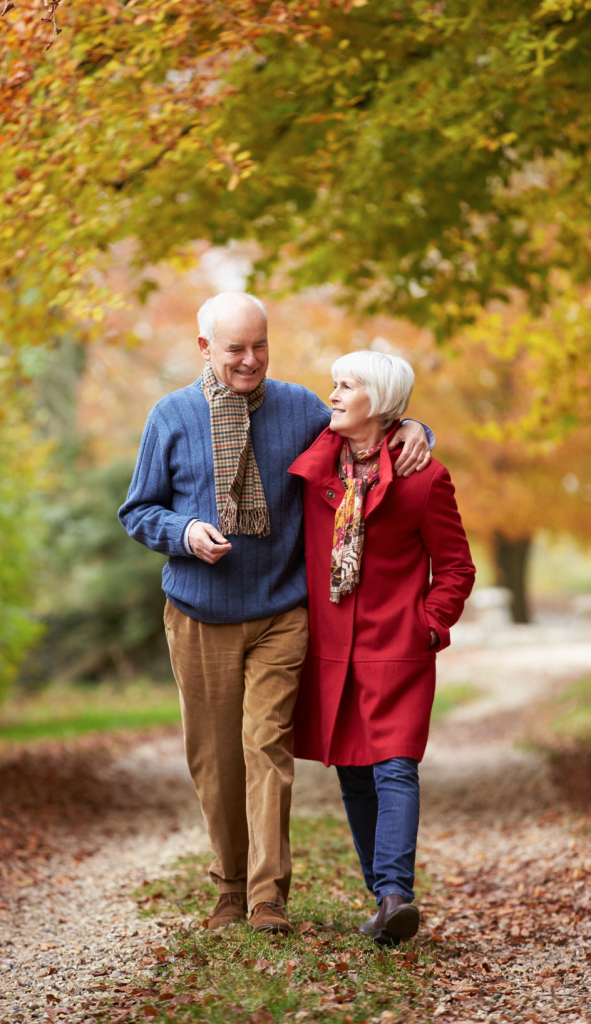Warm Wishes for a
Happy Hanukkah and Thanksgiving
from the Staff and Trustees at The Cedars
Warm Wishes for a
Happy Hanukkah and Thanksgiving
from the Staff and Trustees at The Cedars
Channel 13 News joined members at The Atrium at The Cedars, today to ask them about  their memories of John F. Kennedy’s assassination on November 22, 1963. Four members gathered in the living room to share their recollections and the ‘loss of innocence’ that followed.
their memories of John F. Kennedy’s assassination on November 22, 1963. Four members gathered in the living room to share their recollections and the ‘loss of innocence’ that followed.
Bob Ryan recalled living in New York and, once hearing the news, followed the television broadcasts and the insanity that followed. On the day of JFK’s funeral, he closed is office and production facilities for the day. “Everyone went to church,” he explained, ” and that was the first time I recall ever hearing the National Anthem played at Catholic mass.”
Margaretmary McCann, a school teacher in Portland at the time, explained the challenge of relating the news to her fifth grade class. “We were called into the principal’s office and told the news, and upon returning to the classroom I explained that something awful had happened to the president, and that everyone was going home for the day. I remember feeling that the parents should tell their children.” Margaretmary went on to say that she had the pleasure of attending Kennedy’s inaugural ball with her sisters, and showed everyone the medallion she received that night.
A young mother living in New Jersey, Charlotte Rodetsky was nursing her newborn and tending to her toddler on his ‘noisy’ hobbyhorse when the news was aired on television. “I was busy at the time and remember thinking that some Bannana Republic had shot their president, when my husband came up from his office and told me that our president had been killed.” Charlotte then said that her community gathered for services at her synagogue, “because people were looking for a place of comfort.”
And finally, Les Brewer was in his hometown of Bar Harbor and discussed the fact that no one even knew JFK was in Dallas or why, because news was not as readily available then. Following the incident, he spent much time reading about the former president and his family – having so much respect for their intelligence and grace – and continues to wonder how the ensuing years would have been different if he had lived.
“If only it had rained that day,” MargaretMary lamented. “The car would have been protected and it would not have happened.”
It really takes the fog out of the brain … just great mental exercise.” —HENRY GAGNON
“STAY SHARP,” Henry Gagnon encourages everyone, and laughter and applause ripple through the room as someone solves another crossword clue. Henry and his friends at The Atrium are working together to solve a Never2Late puzzle after a brisk walk in the September sunshine, and the combination of physical and mental exercise is doing exactly that: sharpening their thinking. It’s a brand-new program at The Atrium called Train Your Brain, and it is already a big hit with members.
“The Cedars is committed to a holistic approach to wellness, Lifestyle Coordinator Janine Fifield explains. “Making sure we are caring for our members’ bodies, minds and spirits. Train Your Brain strengthens hearts and minds, lifts moods … it’s fun.”
“Medical research shows that cardiovascular exercise like walking or running improves our mental fitness, too,” Angela Hunt, Chief Operating Officer, explains. “As we age, our cognitive abilities—the way we process language and numbers, our problem-solving skills and our creativity—can slow down if we don’t challenge ourselves.”
“The brain is like any other muscle in your body,” Sharon Leddy- Smart, Member Services Director at The Atrium, adds. “If you don’t use it, you can lose it.”
The Train Your Brain group agrees. “It really takes the fog out of your brain … just great mental exercise,” says Henry.
Train Your Brain is also a true community effort. The Never2Late software, a collection of engaging apps that stimulate thinking, was purchased with funds raised by The Cedars Auxiliary and is a resident favorite in The Skilled Care Center and The Osher Inn. Sharon and Janine were eager to add another program to The Atrium’s long list of social and intellectual offerings, like the Book Club and Current Events Discussion, and their fitness classes. And Angie was intrigued by cutting-edge research around the connection between physical health and mental health as we age.
“The pieces were all there,” Sharon says. “It just clicked.”
You are invited to join us
Thursday December 5, 2013
At The Atrium at The Cedars
Find out what makes us shine!
RSVP 207-221-7100
 The Wellness Program at The Cedars retirement community received an award from Harvard Pilgrim for our commitment to health and wellness, community-wide. As a result, The Cedars staff has benefitted from ongoing education and programming through a wellness grant. Recently, Heidi Roth, Registered Dietician, paid us a visit to discuss plant-based eating.
The Wellness Program at The Cedars retirement community received an award from Harvard Pilgrim for our commitment to health and wellness, community-wide. As a result, The Cedars staff has benefitted from ongoing education and programming through a wellness grant. Recently, Heidi Roth, Registered Dietician, paid us a visit to discuss plant-based eating.
Heidi began by clarifying the differences between the ‘vegan’ and ‘vegetarian’ diets. “It’s not about giving up meat, it’s simply about infusing our diets with more fruits and vegetables.” Several studies tout the health advantages resulting from more plant-based eating, which include decreased risk for stroke, heart attacks, and certain forms of cancer, as well as being able to do away with medications for diabetes and high blood pressure.
“Take one step at a time,” Heidi continued. “Gently incorporate more leafy greens and vegetables into your meals – they’ll slowly substitute the meats.” Nutrient dense foods that are satisfying are the key. It’s OK to eat meat, of course, but shifting away from meat as the focus of the meal will make the difference. Think of meat as the side dish, and the rest will flow
Following the presentation, there was an elevated level of excitement – with the attendants anxious to try some of the recipes. Here is a recipe for delicious Chocolate Mousse – vegan style:
Chocolate Silk Mousse
– 12 oz. dark chocolate chips, 60% cacao
– 1/3 cup strong coffee or Kahlua
– 1 tsp. vanilla extract
– 1 pound silken tofu
– 1TB honey
– Optional garnishes: crushed chocolate cookies, raspberries, whipped cream
Mix chocolate, Kahlua and vanilla together. Melt using double boiler or microwave on defrost setting stirring frequently until melted. Place tofu and honey in blender and add chocolate mixture. Blend until smooth. Divide between 8 dessert dishes, and refrigerate for at least an hour.
Nutrition Info per serving: 281 calories, 8gm calories, 24gm carbs, 77mg sodium.

So, you’re thinking about retiring. You’ve likely considered the financial implications and planned accordingly to allow for a comfortable retirement experience. But have you planned beyond the dollar sign and considered how you’ll actually spend your time in retirement?
Research shows that many retirees, and perhaps men more than women, underestimate the complex nature of the retirement transition and face the unpleasant realization that the absence of employment isn’t always the golden age they had anticipated. We often overlook the subtler aspects that our jobs provide: a sense of purpose, daily routine, unique social relationships with co-workers, and time away from our significant others, yet after entering retirement, the absence of these factors can contribute to a negative experience for retirees. By planning ahead for your retirement wellness you can improve your retirement satisfaction.
Tips for a positive transition to retirement, from The Cedars:
How do you plan to occupy your time? For years much of your day was occupied by work. How will you fill that time now? Whether it’s spending time with grandchildren, traveling, picking up a new hobby or learning a new skill, take the time to plan how you will spend your time.
What brings meaning and purpose to your life? Retires who were engaged in activities that were deeply meaningful and full of purpose enjoyed a more positive retirement experience. Consider what people, activities, and experiences bring meaning to your life and plan how to incorporate this into your regular routine.
What type of daily routine sustains your wellness? What types of daily routines did you have around your job? Maybe you’ve been eager to change these routines once you are retired to better support your health and happiness. Whether it’s a leisurely morning spend reading the paper and enjoying breakfast or a certain time to hit the gym, develop daily routines that support your wellbeing.
Remember that retirement is a HUGE transition! Be kind to yourself as you adjust to this new way of life. Don’t be afraid to try new things, seek the support of friends and family, and explore the resources you need to make this most of this exciting new experience!
For information on how The Cedars retirement community can make a difference in your life, contact Angie D’Amours at adamours@thecedarsportland.org or at 207-221-7100.

In recognition of National Bone and Joint Awareness month, The Cedars is focusing on osetoporosis and how to improve your ‘bone health’.
Osteoporosis is the most prevalent bone condition among Americans with nearly half of all women and one-quarter of men likely to suffer from its’ effects in their lifetime. Each year, approximately one and a half million Americans suffer a bone fracture related to osteoporosis. Fifty years ago, physicians believed that weak bones were a natural part of aging, but today we know that we can do something about it. It is important to remember that you are never too old to do something to improve your bone health.
Osteoporosis is debilitating, reduces freedom of movement, and can cause a high incidence of hip and spinal fractures. Prevention of the condition and patient education is key to reducing the problems associated with osteoporosis. The goal is to reach people prior to an injury so that they can take the necessary steps to prevent bone disease and injury.
One major thing you can do to improve your bone health is to exercise. Clearance by your physician and an evaluation by a physical therapist should first be performed for safety to exercise. Weight bearing exercise is best – walking, even short distances, is a great way to maintain mobility and bone density. Isometric, resistance, and range-of-motion exercises are very helpful in strengthening muscles to keep you more flexible, and improve muscle tone.
Not smoking is a lifestyle choice that reduces our risk for weakened bones. Smoking greatly diminishes our circulation and bones are very dependent on healthy blood circulation. Another little-known fact – drinking excessive alcohol and caffeine can increase calcium loss in your urine. So, moderation is important!
Use proper body mechanics when lifting, standing, and bending. Using large leg muscles rather than your back will prevent injury to the spine. Make use of your cane or walker for stability in walking as recommended by your doctor or therapist. This will prevent falls and the associated fractures that can occur.
Also, take your medicines as prescribed. Calcium may often be ordered by your doctor as well as vitamin D, hormone replacement therapy, calcitonin or one of several newer drugs that helps in bone maintenance. Add foods rich in vitamin D to your diet such as eggs, fish, chicken, liver, as well as cereals and breads, and milk fortified with it. Getting outside in the sun for a brief time each day, while wearing sunscreen, is important for our bodies in producing vitamin D which metabolizes calcium.
Lastly, remember to protect yourself from a fracture by putting into action the preventative steps mentioned above as well as proper fall-prevention strategies. Help to maintain a clutter-free environment in your apartment, use as prescribed your walker/cane whenever walking. Don’t try and reach or stoop to pick up items out of your reach – ask for assistance. Take your time climbing steps, getting on or out of the van, and remain aware of the furniture or other people around you.
By taking steps to prevent bone disease as well as fractures, you can alter the course of your health and life – take good care of yourself!
 In addition to The Cedars Pet Therapy program, The Skilled Care Center at The Cedars has partnered with another wonderful animal assisted therapy group. Silent Sidekicks is a nonprofit organization located in Lincoln, Maine that provides animal assisted therapy/activities under the services of trained volunteers to communities throughout the State of Maine and the Canadian Province of New Brunswick. Their mission is to enrich people’s lives and promote health and happiness through positive experiences with animals. Silent Sidekicks accomplishes this by providing comfort, support, and companionship through animal assisted therapy and activities as well as by increasing public awareness of the benefits of the human-animal bond.
In addition to The Cedars Pet Therapy program, The Skilled Care Center at The Cedars has partnered with another wonderful animal assisted therapy group. Silent Sidekicks is a nonprofit organization located in Lincoln, Maine that provides animal assisted therapy/activities under the services of trained volunteers to communities throughout the State of Maine and the Canadian Province of New Brunswick. Their mission is to enrich people’s lives and promote health and happiness through positive experiences with animals. Silent Sidekicks accomplishes this by providing comfort, support, and companionship through animal assisted therapy and activities as well as by increasing public awareness of the benefits of the human-animal bond.
While at The Cedars, the program will include the use of service dogs, cats, rabbits and guinea pigs. All of the volunteers with Silent Sidekicks consist of fully trained human and animal teams. As always the presence of animals enhances well-being and provides a very therapeutic relationship with residents at The Cedars.
“Having a pet can be greatly beneficial to the health of the older population,” says Karen Snowden, professor at the Texas A&M College of Veterinary Medicine & Biomedical Science (CVM). “A pet can provide companionship and social opportunities for the elderly population, as well as physical, psychological, and emotional health benefits.” Studies have demonstrated positive health benefits such as lowered blood pressure, decreased anxiety and increased physical activity.
For more information on wellness and life enrichment at The Cedars, contact us today.

![]() One of the biggest decisions we face as we age is where we are going to live. Whether we remain at home in our familiar surroundings or move to a community among people with similar interests, we want to find joy and thrive at every stage. The fact is that our health and social situations can change as we age and settings that were once comfortable can become challenging and often lonely. Because of this, we need to periodically evaluate how satisfied we are with our living situation and with that, consider whether community living is right for us.
One of the biggest decisions we face as we age is where we are going to live. Whether we remain at home in our familiar surroundings or move to a community among people with similar interests, we want to find joy and thrive at every stage. The fact is that our health and social situations can change as we age and settings that were once comfortable can become challenging and often lonely. Because of this, we need to periodically evaluate how satisfied we are with our living situation and with that, consider whether community living is right for us.
The reasons for moving to a retirement community are as countless as the people living in them. Many choose to transition to another state in order to be nearer their families while others move within their own communities to ease the burdens of home ownership. And still others tire of living alone and are ready for the next adventure in their lives, among new friends. Whatever the impetus, retirement communities offering a full continuum of health care services provide not only the peace of mind in knowing that health care is available, but also offer benefits of community life.
There has been much emphasis in recent years on seniors staying in their homes. We don’t often hear, however, about the negative effects of isolation and the real need to spend time with others. A recent Gallup poll showed that socialization is clearly linked to happiness and lower stress levels, finding that seniors (65 and older) reported the highest levels of happiness of any age group, and those who spend at least three hours daily socializing are more likely than their peers to report happiness (Gallup, December 2011).
Another study reported that elderly people who like to participate in social activities live an average of two and a half years longer than people who spend most of their time alone. The study further suggested that the physical health benefits of socializing were equal to physical exercise, even though the social activities involved almost no physical exertion. “It wasn’t physical activity or physical health but feeling worthwhile that led to longer life. Good health and eating counted, but it was social interaction that was responsible for the results.” (Value Options, 2006)
Family members frequently share with us that their parents have become more involved in life after moving to our community, and that the children and grandchildren enjoy visiting more than ever. “They’re like family – people living there really care about my parents.” B.M., daughter of resident. Community spaces, meals in the café and dining room, programs and events, and community excursions all create opportunities for fellowship and camaraderie in retirement living.
When it’s time to evaluate your options, visit a senior living community that feels comfortable to you and talk to the residents living there about how their lives have changed since they moved to a retirement community. For more information on The Cedars, call our marketing representative today at 207-221-7100.
Please join us for an Open House at The Atrium
October 22, 2013 from 10AM to Noon
And find out more about independent living at The Cedars
FMI call 207-221-7100